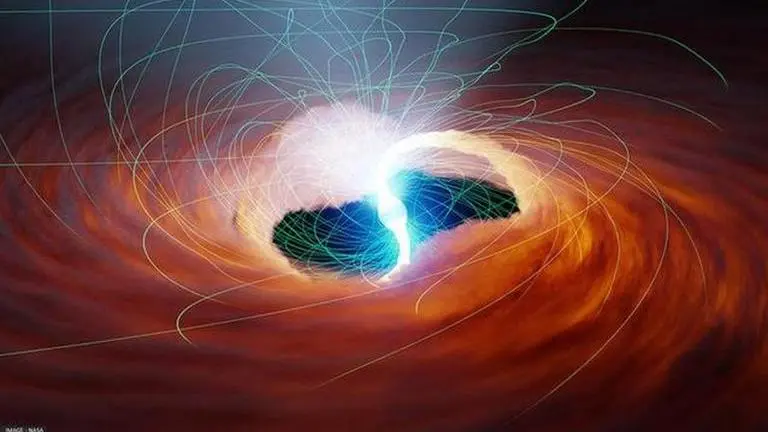Updated 7 April 2023 at 13:07 IST
NASA's NuSTAR telescope unravels cosmic mystery of ultra-luminous X-ray sources
Observations made by NASA's NuSTAR X-ray telescope have provided an explanation for the intense brightness emitted by ultra-luminous X-ray sources.
- Science News
- 2 min read

Radiant objects in the cosmos that have perplexed scientists for years finally have an explanation for their intense brightness, thanks to observations made by NASA's NuSTAR X-ray telescope. The objects, known as ultra-luminous X-ray sources (ULXs), release about 10 million times more energy than the Sun and even transcend Eddington limit, a boundary that determines the maximum luminosity a body can achieve on the basis of its mass. What makes the ULXs so puzzling for scientists is their ability to often surpass that limit by 100 to 500 times, according to NASA's official website.
But a recent study published in The Astrophysical Journal explains a hypothesis on the cosmic phenomenon. The theory suggests that the record-breaking brightness occurs due to strong magnetic fields of the ULXs, which distort atoms into long, string-like shapes.
Lead author of the study elucidates the hypothesis
This poses difficulties for particles of light, known as photons, to push away atoms, thus increasing the maximum brightness that the object can emit. “These observations let us see the effects of these incredibly strong magnetic fields that we could never reproduce on Earth with current technology,” said Matteo Bachetti, an astrophysicist with the National Institute of Astrophysics’ Cagliari Observatory in Italy and lead author of the study.
“This is the beauty of astronomy. Observing the sky, we expand our ability to investigate how the universe works. On the other hand, we cannot really set up experiments to get quick answers; we have to wait for the universe to show us its secrets," Bachetti added.
Advertisement
The latest hypothesis dispels a previous one that attempted to explain the reason behind the brightness of the objects. The old theory was based on observations made of other objects in space, and suggested that strong winds create a hollow cone where the light comes from. If this is pointed directly at earth, the cone would be an optical illusion and inaccurately indicate the ULXs were exceeding their maximum brightness limit.
Published By : Deeksha Sharma
Published On: 7 April 2023 at 13:07 IST
